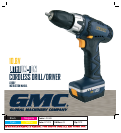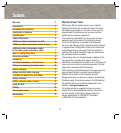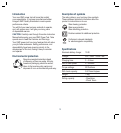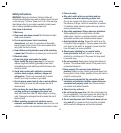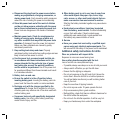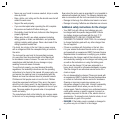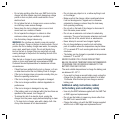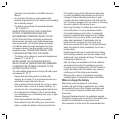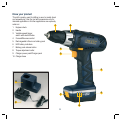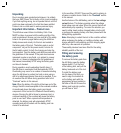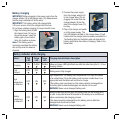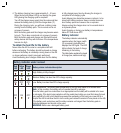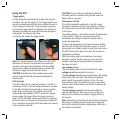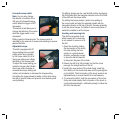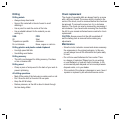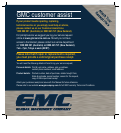
8
according to the instructions in the GMC Instruction
Manual.
• Do not charge the battery in a place where static
electricity is generated nor let the battery touch something
that is statically charged.
• The battery can be stored at temperatures between
– 20° C and 40° C.
NEVER STORE OR LEAVE YOUR LITHIUM IRON
BATTERY IN TEMPERATURES OVER THAT
RECOMMENDED OTHERWISE FIRE MAY OCCUR.
Do NOT store the Lithium Iron battery anywhere that
the temperature can easily reach higher temperatures
than recommended - this includes garden type sheds,
and Vehicles where the inside temperature can climb
to dangerous levels in the direct sunlight and on high
temperature days. THINK BEFORE LEAVING YOUR
LITHIUM IRON BATTERY PACK IN STORAGE.
• The battery can be charged or operated at temperatures
between 0° C and 40° C.
NEVER CHARGE YOU LITHIUM IRON BATTERY
BELOW OR ABOVE TEMPERATURES RECOMMENDED
OTHERWISE FIRE OR SERIOUS DAMAGE TO THE
BATTERY PACK MAY OCCUR.
The most suitable temperatures to charge the battery pack
are between 20 - 25° C.
• Always allow the battery pack to cool down after
charging, do not place it in a hot environment such as a
metal shed or open trailer left in the sun.
• Take care where the tool is stored. Do not store in areas
of corrosive fumes, or salt air or similar conditions. Try
and store the tool in the packaging supplied with the tool.
• Do not dispose of the battery in a fire or put the battery
into a microwave oven, conventional oven, dryer, or high-
pressure container.
Under these conditions, the battery may explode.
• Never attempt to open the battery pack, puncture the
battery or subject the battery to strong physical shock.
• If the plastic housing of the battery pack breaks open
or cracks, immediately discontinue its use and do not
recharge it. Ensure the battery pack clip is in good
condition and will not allow the pack to fall free from the
tool. If the clip is damaged or for any reason is not locking
the pack in place Do Not continue to use.
• Stop using the battery if it exhibits abnormal heat, odour,
colour, deformation, or is in an abnormal condition.
• If you detect leakage or a foul odour, it is especially
important to keep the battery away from fire. If battery
liquid leaks onto your skin or clothes, wash well with
clean water immediately. If liquid leaking from the
battery gets into your eyes, do not rub your eyes.
Rinse your eyes well (for at least 10 minutes) with clean
water, and consult a doctor immediately. Do not use a
leaking battery.
• Handle batteries with care to avoid shorting the battery
with conducting materials, such as nails, screws, metal
watch bands, rings, bracelets, and keys. The battery may
overheat and could burn you.
• After the battery has reached the end of its useful life,
we recommend recycling the materials at your local
municipal council recycling centre. DO NOT attempt to
replace the battery cells in the battery pack, repair or
modify any part of the battery pack assembly
• When recycling, make it nonconductive by applying
insulating tape to the terminals located on the battery.
When to charge the battery
New battery packs are shipped in a low charge
condition and must be fully charged before use. It takes
approximately 8 hours to fully charge a new battery and
3 – 5 hours once the battery has been used in the tool
a few times.
Charging of batteries should not be undertaken casually.
Through the charging cycle the condition of the battery pack
should be monitored and the charge cycle turned
off at completion or at the end of the recommended time.



